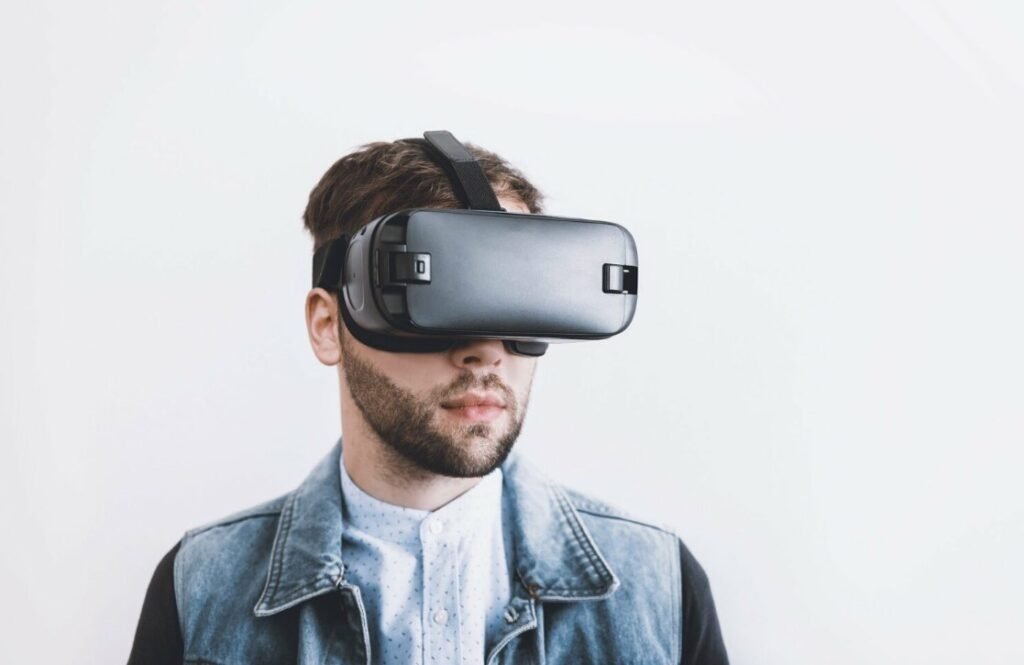Sony has announced a new headset and controller system that aims to revolutionize the way 3D content is created and edited. The system, called Spatial Content Creation, was unveiled at the CES 2024 event in Las Vegas.
Spatial Content Creation is a system that consists of a VR headset, a pair of controllers, and a software platform. The system allows users to manipulate 3D models and scenes in virtual reality, using intuitive gestures and commands. Users can also import and export 3D content from other applications, such as Blender, Maya, or Unity.

The VR headset is based on Sony’s existing PlayStation VR technology, but with some improvements. The headset has a higher resolution, a wider field of view, and a more comfortable design. The controllers are shaped like rings, and have sensors that track the position and orientation of the user’s fingers. The controllers also have buttons, triggers, and touchpads for additional input options.
The software platform is designed to be compatible with various types of 3D content, such as games, animations, simulations, or education. The platform also supports Sony’s 360 Reality Audio format, which creates immersive soundscapes in VR. Users can also collaborate with other creators in real time, using voice chat and avatars.
Why is Spatial Content Creation important?
Sony claims that Spatial Content Creation is a game-changer for 3D professionals and enthusiasts. The system offers a new way of creating and editing 3D content, that is more natural, intuitive, and efficient than traditional methods. The system also enables users to experience their creations in VR, which can enhance their creativity and feedback.
Sony also hopes that Spatial Content Creation will attract more users to VR, and expand the market for 3D content. The system is aimed at both professionals and hobbyists, and can be used for various purposes, such as entertainment, education, or business. Sony plans to launch the system later this year, and will offer various pricing options and subscription plans.
How does Spatial Content Creation compare to other VR systems?
Spatial Content Creation is not the first VR system that allows users to create and edit 3D content. Other systems, such as Oculus Medium, Google Blocks, or Tilt Brush, also offer similar features. However, Sony claims that Spatial Content Creation is more advanced and versatile than its competitors, and offers a better user experience and performance.
One of the main rivals of Spatial Content Creation is Apple’s Vision Pro, which was also announced at CES 2024. Vision Pro is a mixed-reality headset that combines VR and AR, and also targets 3D content creators. Vision Pro has a sleeker design, a higher resolution, and a wider field of view than Spatial Content Creation. However, Vision Pro is also more expensive, and requires a connection to an iPhone or a Mac.
Sony believes that Spatial Content Creation has an edge over Vision Pro, because it is more focused on VR, and offers more control and flexibility to users. Sony also boasts that Spatial Content Creation has a longer battery life, a larger storage capacity, and a more diverse content library than Vision Pro.
What are the challenges and opportunities for Spatial Content Creation?
Spatial Content Creation is an ambitious and innovative project, but it also faces some challenges and risks. One of the challenges is to convince users to adopt the system, and to overcome the barriers of VR, such as cost, comfort, and accessibility. Another challenge is to ensure the quality and security of the 3D content, and to prevent piracy and plagiarism. A third challenge is to compete with other VR and AR systems, and to keep up with the fast-paced development of the technology.
On the other hand, Spatial Content Creation also has many opportunities and potentials. One of the opportunities is to create a new market and community for 3D content, and to foster collaboration and innovation among creators. Another opportunity is to explore new applications and genres for 3D content, and to enrich the VR experience for users. A third opportunity is to leverage Sony’s expertise and reputation in the gaming and entertainment industry, and to integrate Spatial Content Creation with other Sony products and services.
Spatial Content Creation is a bold and exciting venture, that could change the way 3D content is created and consumed. The system promises to offer a new level of immersion, interactivity, and creativity for VR users and 3D professionals. Spatial Content Creation is expected to launch later this year, and will be available for pre-order soon.
